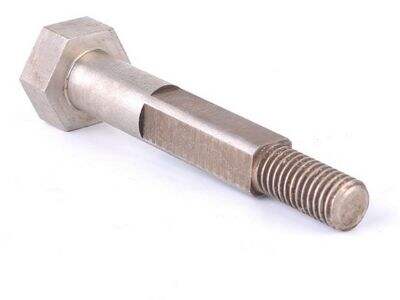Kas te kunagi mõtlesite, miks kruvide (kinnitusdetailide) puhul kehtib üldreegel? Selles artiklis tutveme kahe olulise kinnituselementide inseneristandardiga DIN912 ja DIN913. Võite olla segaduses nende tähtede ja numbrite mõistatuse pärast, kuid need aitavad tagada, et meie kasutatavad kinnitused oleksid ohutud, tõhusad ja kvaliteetsed.
Mis on DIN912 ja DIN913?
Nii, esiteks, mis on DIN912 ja mis on DIN913? DIN tähendab „Deutsches Institut für Normung“, ehk saksa keeles Standardimise Instituut. Need standardid on sarnased reeglitele, mida insenerid peavad kinnituselementide disainimisel ja tootmisel kasutama. DIN912 on mutrivõtmeotsaga peapurgide jaoks, din913 pura otstega seadistussarvide jaoks.
Miks meil sellised standardid vajalikud on
Te võite küsida, miks meil neid reegleid üldse vaja on. Kas prooviksite ehitada LEGO-maja ilma juhendita? See oleks segadus! Kinnitusinseneri töös aitavad need reeglid kujundajatel luua sobivaid ja funktsionaalseid kinnituskohasid. Need hõlmavad kruvide suurust ja kuju kuni kasutatavate materjalideni – kõik peab olema täpselt õige.
Kuidas need juhised insenere aitavad
Inseneritöö pöördepunkt on efektiivsus, ja din912 ja DIN913 on kõik seotud sellega, et asjad toimuksid sujuvamalt. Kui nende konkreetse asukoha, tööaja ja hooldusnõuete kohta poleks teada, peaksid insenerid kulutama arvamatuid tunde uurimisele ja katsetamisele, et saaksid töötada range reguleeritud ja struktureeritud võrguruumi piires. See tähendab kiiremat tootmist, madalamaid kulusid ja paremaid tooteid, mida me igapäevaselt kasutada saame.
Miks need kriteeriumid olulised on?
Kas oled kunagi näinud, kuidas kruvi sobib täielikult mutri sisse? Selle põhjuseks on norm, nagu din912 või DIN913. Kinnitused tagavad, et kõik sobib omavahel hästi kokku ja et neid on lihtne paigaldada. Kas tegemist on mööbli kokkupanekuga, jalgratta remondiga või puuümbrise ehitamisega, need standardid tagavad, et kõik omavahel kenasti sobib.
Kas kvaliteet on nende standardite kaudu tagatud?
Lõpuks on kvaliteedist vaja viimast sõna. Kinnituselemendid, eriti ohutuse seisukohalt, on tähtsad. Me nõuame kõrgekvaliteedilisi kinnituselemente, et tagada juhtijate ohutus ja pikk kasutusiga. Tugevuse ja pika kasutusiga seisukohalt sobivad paremini DIN912 ja DIN913. Nende standardite rakendamine võimaldab tootjatel säilitada kvaliteedi taseme. See aitab meil tunda end kindlalt, et meie hooned, sõidukid ja seadmed on ohutud.

